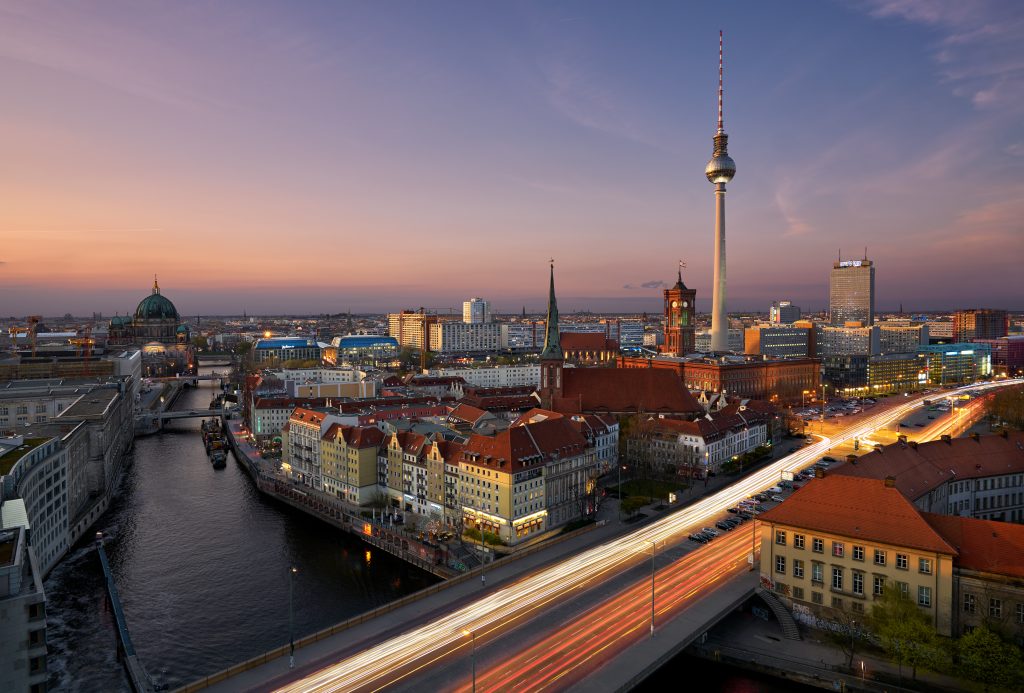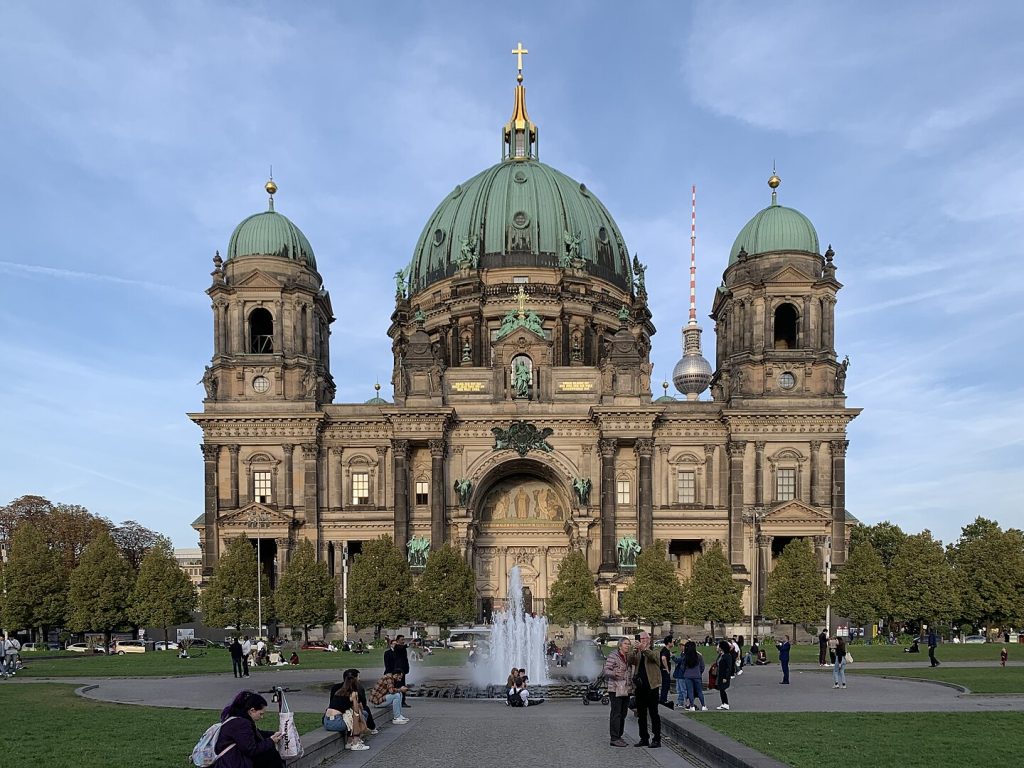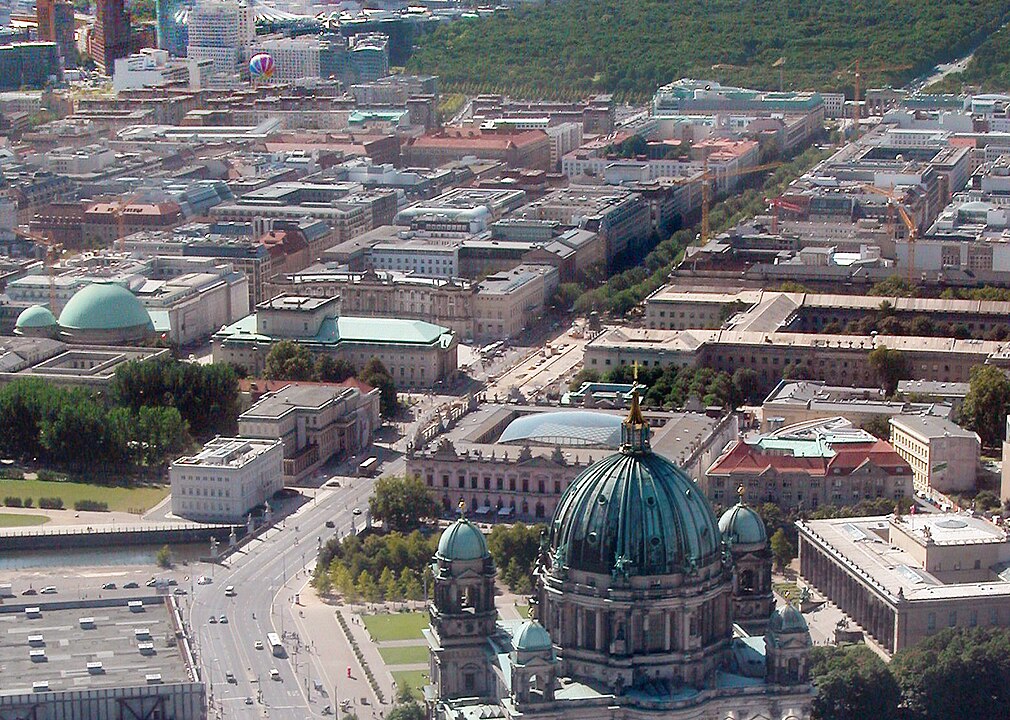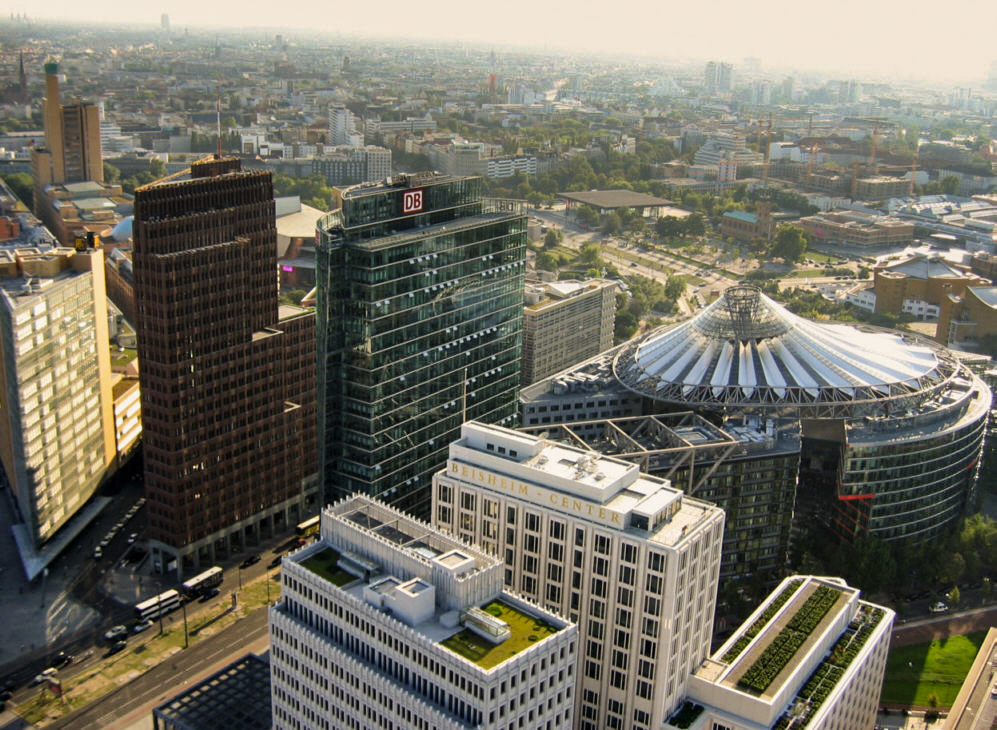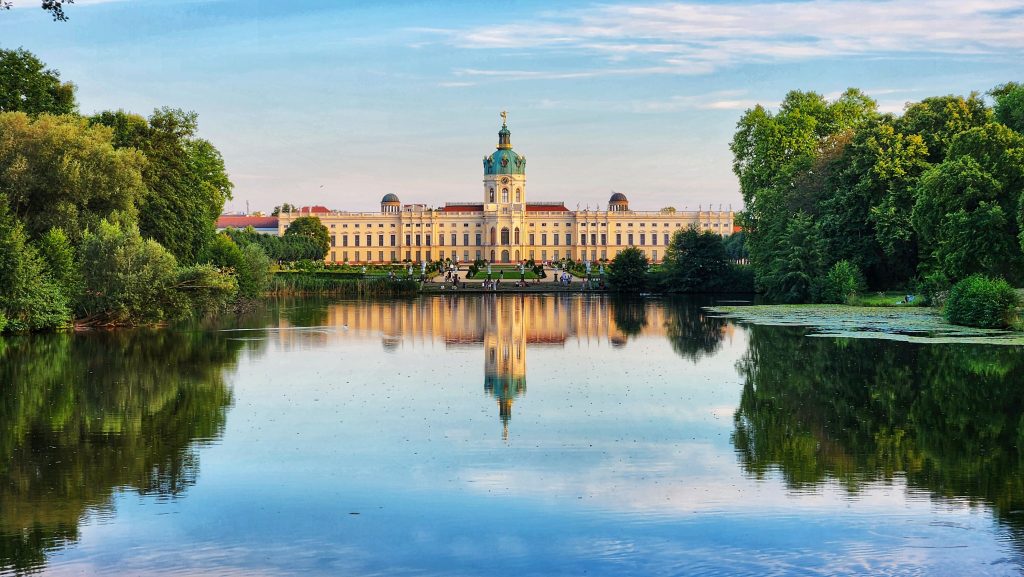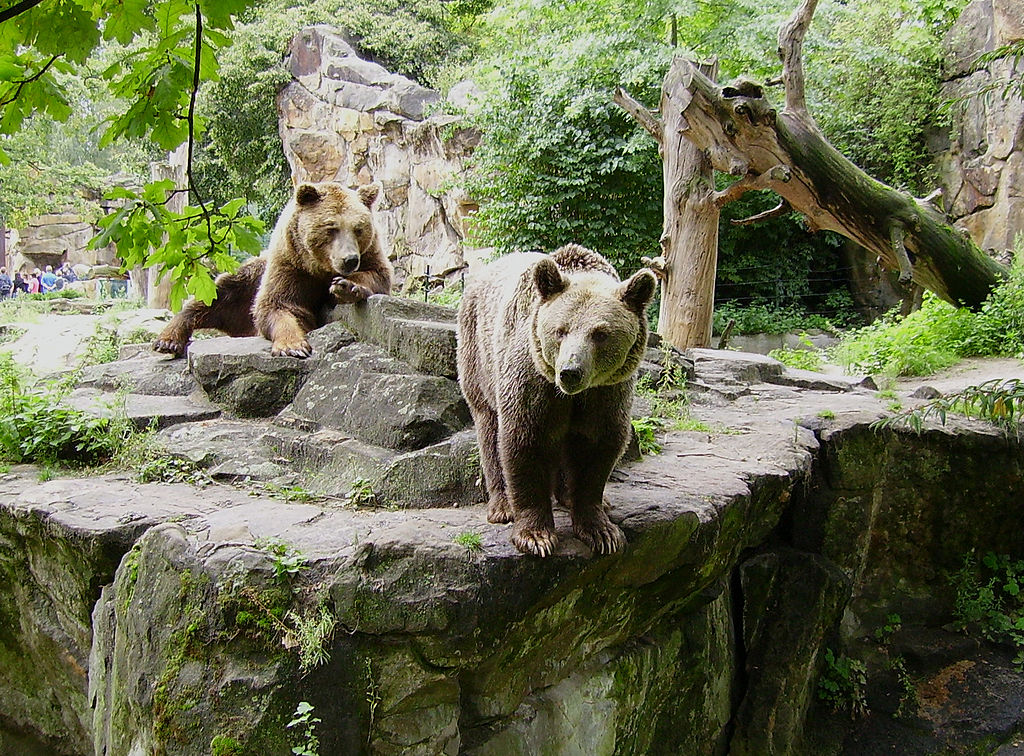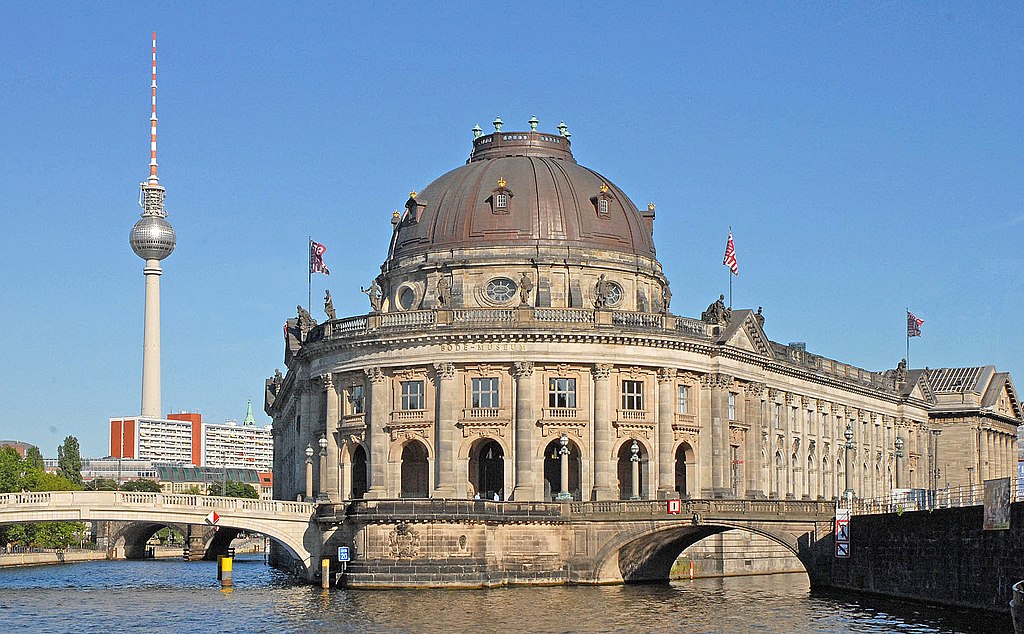- 1️⃣ Introduction - the heart of the former GDR and a symbol of modern Berlin
- 2️⃣ History of Alexanderplatz - from market square to GDR focal point
- 3️⃣ Aleksanderplatz during the era of the German Democratic Republic
- 4️⃣ Architecture and urban planning - block housing, towers and social modernism
- 5️⃣ Television Tower (Fernsehturm) - an icon of the city
- 6️⃣ Transformation after German reunification - the new life of the square
- 7️⃣ Alexanderplatz today - commerce, transportation and city life
- 8️⃣ Interesting facts and historical facts about the square
1️⃣ Introduction - the heart of the former GDR and a symbol of modern Berlin
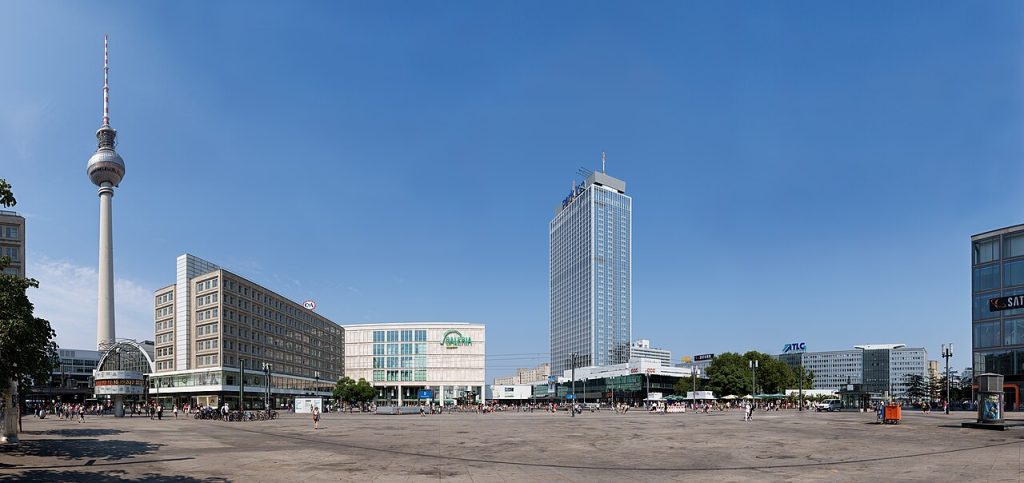
Alexanderplatz is one of those places that not only every Berliner knows, but that has become engrained in the collective memory of Germany - especially East Germany. Once the center of life in the GDR, today - a bustling square and iconic landmark that connects the socialist past with the modern metropolis.
Here you will find everything that is characteristic of modern Berlin:
- monumental Television Tower (Fernsehturm), visible from any point in the city,
- futuristic Urania Clock, at which people have been socializing for decades,
- distinctive large-panel buildings and modern shopping malls.
Although during the GDR years Alexanderplatz was associated with the gray and uniformity of the system, today it is full of color, diversity and urban energy.
It is here that you can feel the true spirit of Berlin - a city that does not cut itself off from the past, but weaves it into everyday life, creating a space that is one of a kind.
Whether you're a history enthusiast, a lover of modernist architecture, or simply a tourist soaking up the city's atmosphere - you're in for a treat. Alexanderplatz is a place you must see and feel for yourself.
2️⃣ History of Alexanderplatz - from market square to GDR focal point
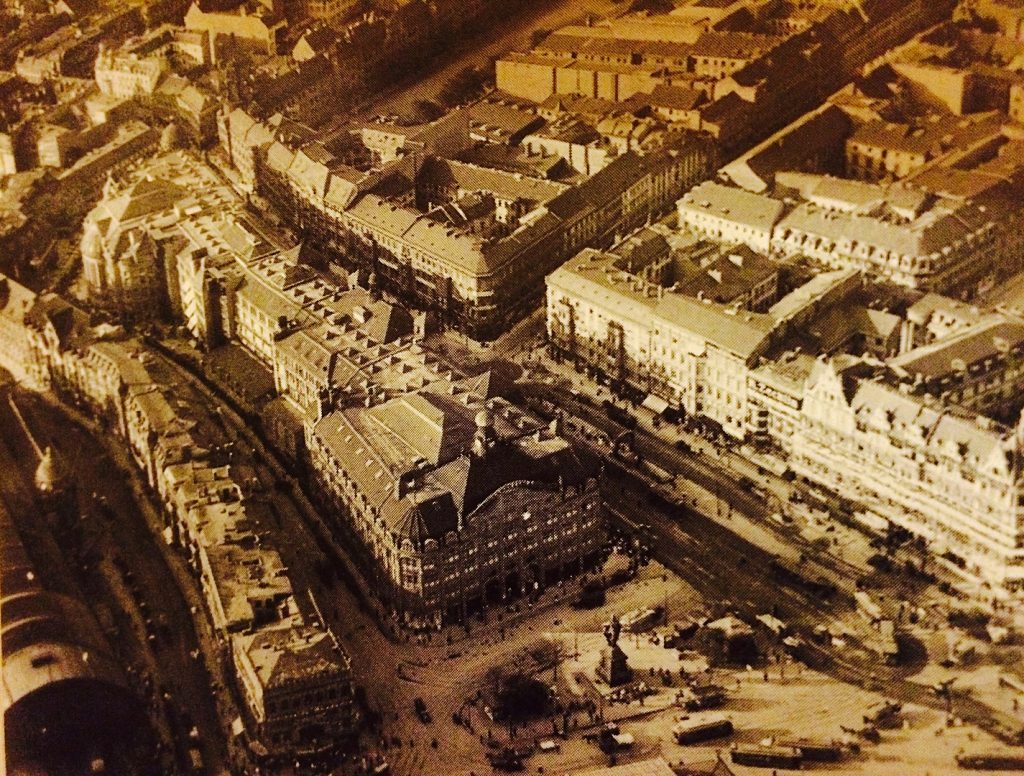
💠 Medieval roots and tsarist inspirations
Before Alexanderplatz became the socialist heart of Berlin, it served a much more mundane function. In the Middle Ages, the area was located outside the city walls and was used as a place for trading cattle - hence the original name Ochsenmarkt, or "beef square." It was not until 1805, after the visit of Czar Alexander I, that the name was changed to Alexanderplatz - as a gesture of Prussian friendship towards Russia. Over time, the square began to develop into a bustling transfer and shopping point in the city center.
💠 Modernity, war and ruins
In the 19th century, Alexanderplatz became a symbol of urban modernity - streetcar lines crossed here, omnibuses ran here, and the surrounding tenements bustled with life. Unfortunately, World War II brutally interrupted this development. As a result of Allied bombing, the square lay in ruins, and its future was in question.
💠 Reconstruction in the spirit of socialism
After the war, Alexanderplatz became part of East Berlin and was quickly transformed into the central square of the GDR. In the 1960s, its monumental reconstruction began - in accordance with the idea of a new socialist order. Gone were the pre-war facades, replaced by wide thoroughfares, modernist blocks of flats and the famous Television Tower. The square became a place for parades, demonstrations and the daily life of GDR citizens - the heart of the ideology and architecture of the time.
💠 A symbol of change and tension
Although Alexanderplatz was supposed to be a showcase of socialist modernity, for many residents it was also a symbol of control, grayness and concrete monotony. On the other hand - it was here that one of the largest demonstrations in the history of the GDR took place in 1989, which preceded the fall of the Berlin Wall. History has come full circle - the square has again become a space of change, but this time not architectural, but political and social.
3️⃣ Aleksanderplatz during the era of the German Democratic Republic
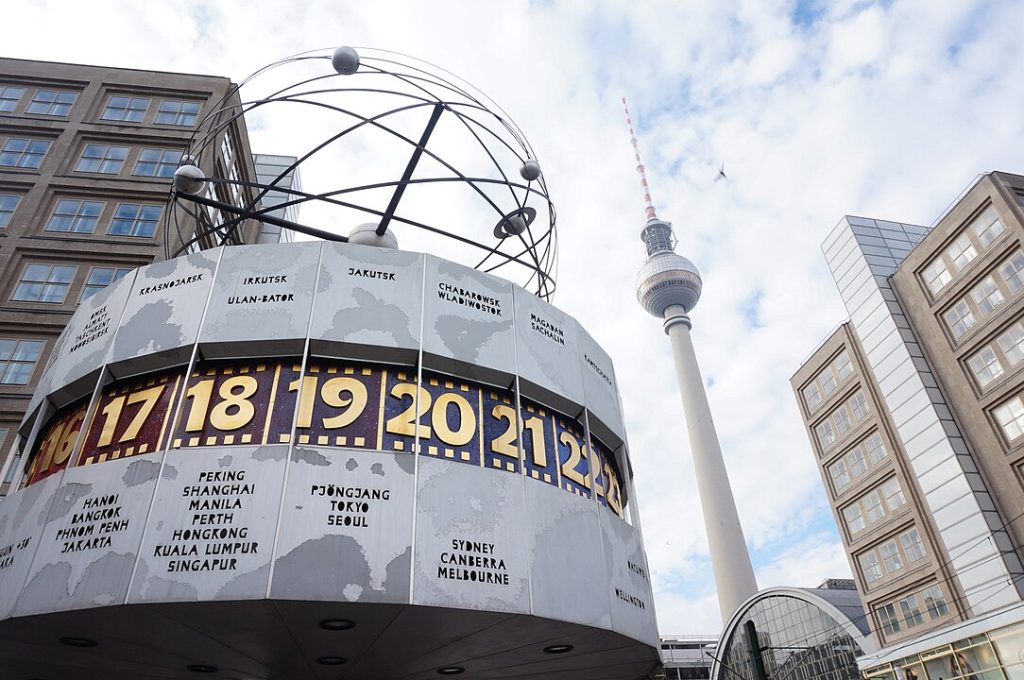
💠 The new center of the new state
After the establishment of the German Democratic Republic in 1949, Alexanderplatz gained status as not only the geographic but also the ideological center of East Berlin. The Communists wanted to create a space that reflected the vision of a modern, socialist society. It was here that they decided to concentrate commerce, communications and monumental architecture - all in keeping with the spirit of the times and the political message.
💠 Socialist urbanism in practice
In the 1960s, a major reconstruction of the square began. Remnants of historic buildings disappeared and were replaced by massive blocks of glass and concrete, wide pedestrian thoroughfares and new architectural icons - such as the famous Weltzeituhr (world clock), the People's Friendship fountain and the Warenhaus Center department stores. The whole was intended to serve not only functionality, but also to build the "new man" - socialist citizen.
💠 Television tower as a manifesto
Without a doubt, the most important feature of Aleksanderplatz during the GDR era was the Television Tower (Fernsehturm), commissioned in 1969. Standing 368 meters tall and visible from almost every point in the city, it was meant to be a testament to the technological might of the GDR. Its shiny sphere, resembling a satellite, was a conscious counterpoint to West Berlin - a symbol of modernity and distinctiveness.
💠 Square of daily life and propaganda
Alexanderplatz was the place where the daily needs of the population - shopping, meetings, communication - and official propaganda intersected. May Day demonstrations, speeches by party leaders and state ceremonies were held here. The square was bustling with life, but at the same time it was a reminder of the constant presence of the system that created it.
4️⃣ Architecture and urban planning - block housing, towers and social modernism
If you want to discover interesting places for the little ones, take a look at our list:
👉 Top 10 - attractions for children in Berlin

💠 The city of the future according to the GDR
The authorities of the German Democratic Republic wanted to make Alexanderplatz a model socialist city center - open, functional and modern. The urban planning of the square was subordinated to the idea of the "socialist man" - everything was to be within easy reach: stores, restaurants, transportation and meeting places. Concrete and glass dominated the space, and traditional townhouses gave way to geometric blocks.
💠 Socmodernism in full swing
The architectural style that dominated Alexanderplatz was typical socialist modernism - commonly known as socmodernism. It was characterized by simplicity of form, repetition of modules and lack of decorativeness. Examples include the Teacher's House, with its characteristic mosaic frieze depicting life in the GDR, or huge department stores with glass facades. The architecture was meant to be practical yet impressive - a show of the system's strength.
💠 Space dominated by height
Verticality was a key element of the square. The Television Tower (Fernsehturm), the Hotel Stadt Berlin (today's Park Inn), and the block-long residential buildings around Karl-Marx-Allee were all intended to form the modern horizon of East Berlin. The residential and office towers were laid out with grandeur, with long distances, to symbolize the order and spaciousness of life in a socialist state.
💠 Austerity and monumentality - advantages or disadvantages?
While Alexanderplatz was impressive in its grandeur, not everyone shared the enthusiasm for its aesthetics. Many residents and visitors found the square cool, impersonal, even overwhelming. The lack of greenery, concrete paving and monumental scales created an atmosphere that was more functional than welcoming. On the other hand - it was a space consistent and coherent in its concept, which could not be confused with any other part of the city.
5️⃣ Television Tower (Fernsehturm) - an icon of the city
Berlin TV Tower - 10 Fascinating Trivia About Germany's Icon
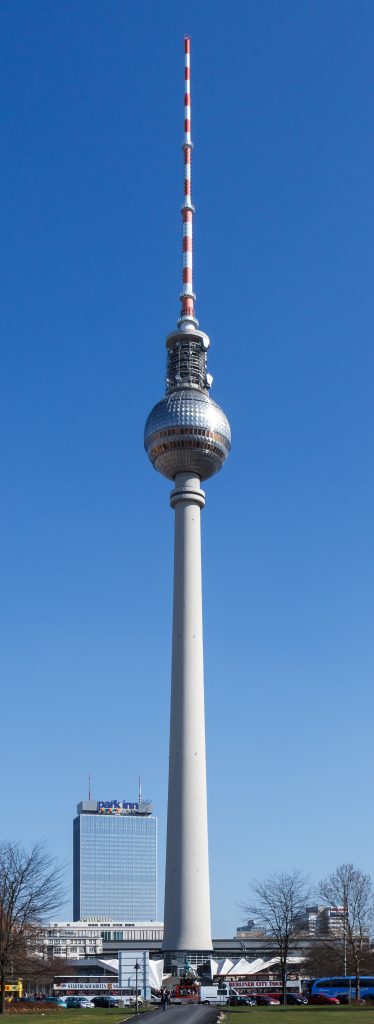
💠 A symbol of modernity with a political message
The Television Tower, towering over Alexanderplatz, is not only a landmark on the map of Berlin - it is also an ideological manifesto. Commissioned in 1969, it was intended to show that the German Democratic Republic was a progressive, modern and technically advanced country. Measuring 368 meters, the structure then became the second tallest television tower in the world and by far the tallest building in Germany.
💠 An engineering masterpiece
The construction of the tower was a huge undertaking - the latest technology for the time was used, and the design itself had to be precise not only technically, but also symbolically. The shiny, spherical viewing platform resembled a satellite - a clear reference to the era of the space race and the aspirations of the GDR. From the platform it was possible to view the entire Berlin skyline, both East and West - which had an unintentional but highly symbolic overtone.
💠 "God's Revenge?"
One of the most famous anecdotes from the GDR era is associated with the tower. On sunny days, a cross-shaped luminous reflection appeared on its glass sphere. Residents of West Berlin called it "God's revenge" - an ironic commentary on the atheistic policies of the GDR authorities. Although the party tried to downplay this optical effect, it could not be removed - and the symbol itself became part of urban legend.
💠 An icon that survived the system
After the fall of the Berlin Wall, many symbols of the GDR were gotten rid of - but not the Fernsehturm. The tower survived as the pride of Berliners and a favorite spot for tourists. Today it is one of the most visited viewpoints in Germany, a symbol not only of the former East Berlin, but also of a modern capital that manages to combine a complicated past with an open future.
6️⃣ Transformation after German reunification - the new life of the square
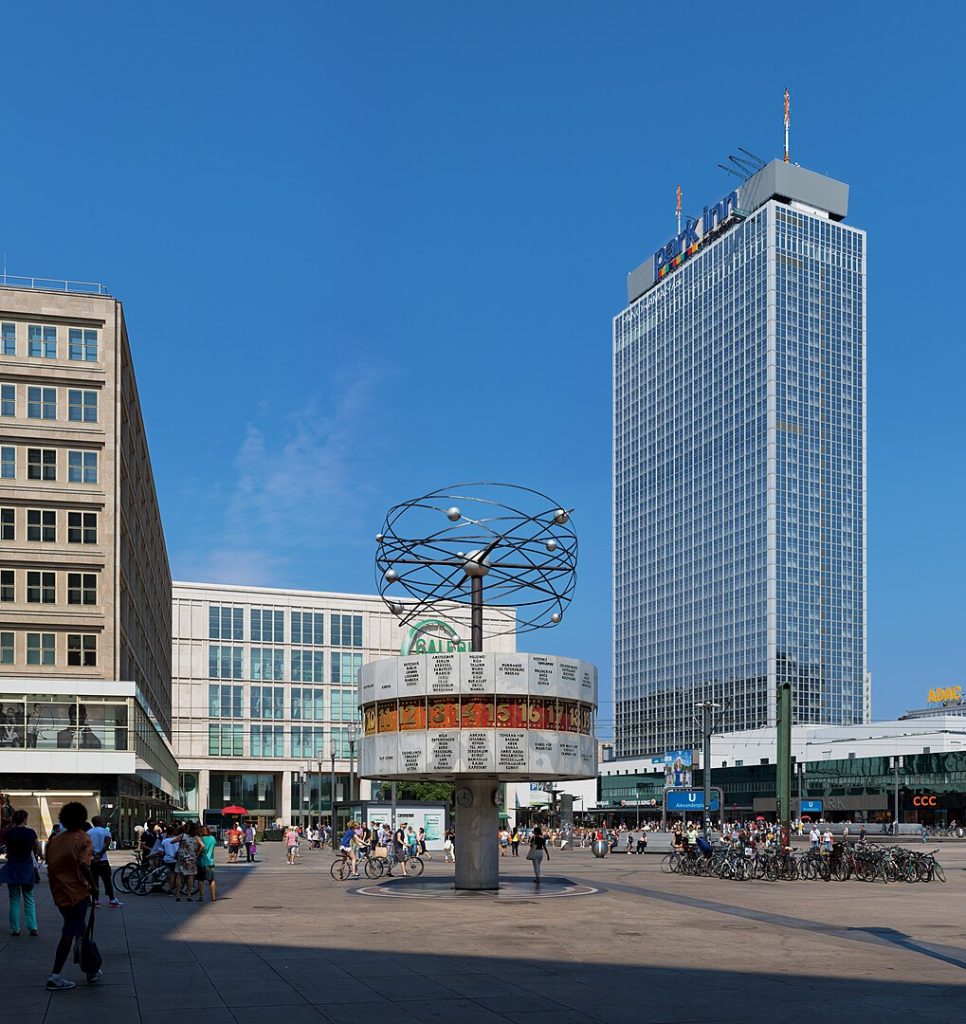
💠 Fall of the wall, fall of the idea
When the Berlin Wall came down in 1989, Alexanderplatz - until then the pride of East Berlin - suddenly lost its political significance. In a matter of months, it went from being a space subservient to the socialist vision to a symbol of an era that had passed away. The concrete blocks and monumental architecture began to evoke extreme emotions: for some - sentiment and memory, for others - aesthetic and functional failure.
💠 New urban order
In the 1990s, the first attempts to revitalize the square began. The goal was to transform Alexanderplatz into a modern, people-friendly urban space, corresponding to the standards of a Western city. International architectural competitions were held, and plans were made to build new skyscrapers, expand commercial functions and restore the so-called "urban density." Although many of these concepts remained only on paper, a slow process of disenchanting the square has begun.
💠 The return of colors, brands and people
Former department stores and party offices have given way to shopping malls, cafes, chain stores and service outlets. Christmas markets, exhibitions and cultural events began to be held in a space that until recently was used for speeches and parades. Alexanderplatz became a commercial and transportation center anew - this time no longer ideological, but commercial.
💠 A city that learns from the past
The transformation of Alexanderplatz has been an ambiguous process. Some social-modern architectural elements survived, while others disappeared irretrievably. The modern square is a mosaic - of the GDR past, the modernization attempts of the 1990s and the current needs of the city. It is a space that is constantly changing and constantly provokes questions: how to preserve memory without blocking the future?
7️⃣ Alexanderplatz today - commerce, transportation and city life
And if you're interested in fascinating museums, check them out:
👉 Top 10 - museums in Berlin

💠 The vibrant heart of modern Berlin
Today Alexanderplatz is one of the busiest and most heavily used places in all of Berlin. Thousands of people - residents, tourists, workers and students - pass through here every day. The square, which a few decades ago was the scene of political speeches, today serves a multifaceted function: it is a transportation hub, a shopping center, a meeting place and a place for daily urban activity.
💠 Trade and consumption instead of propaganda
The site, which once housed East German state department stores, is now home to well-known international brands, shopping malls and fast food chains. Alexa, a large shopping mall just steps away from the square, attracts hundreds of customers a day. The square is also home to smaller stores, food outlets and seasonal markets that change the character of the space - especially during the holiday season.
💠 Junction of national importance
Alexanderplatz is one of the main intersections of Berlin's public transportation. Subway lines (U-Bahn), high-speed rail (S-Bahn), streetcars and buses run through here. This makes the square perfectly connected to every part of the city and a natural transfer point - for tourists and locals alike.
💠 Daily life on a metropolitan scale
Although Alexanderplatz is not considered the prettiest place in Berlin, it cannot be denied its character. It is a space of diversity, where languages, styles and stories mix. A street mime can stand next to a shopping mall, an independent bookstore next to a fast food outlet. It's also a place for meetings and protests - a square that hasn't lost its social role, despite the change in the system.
8️⃣ Interesting facts and historical facts about the square
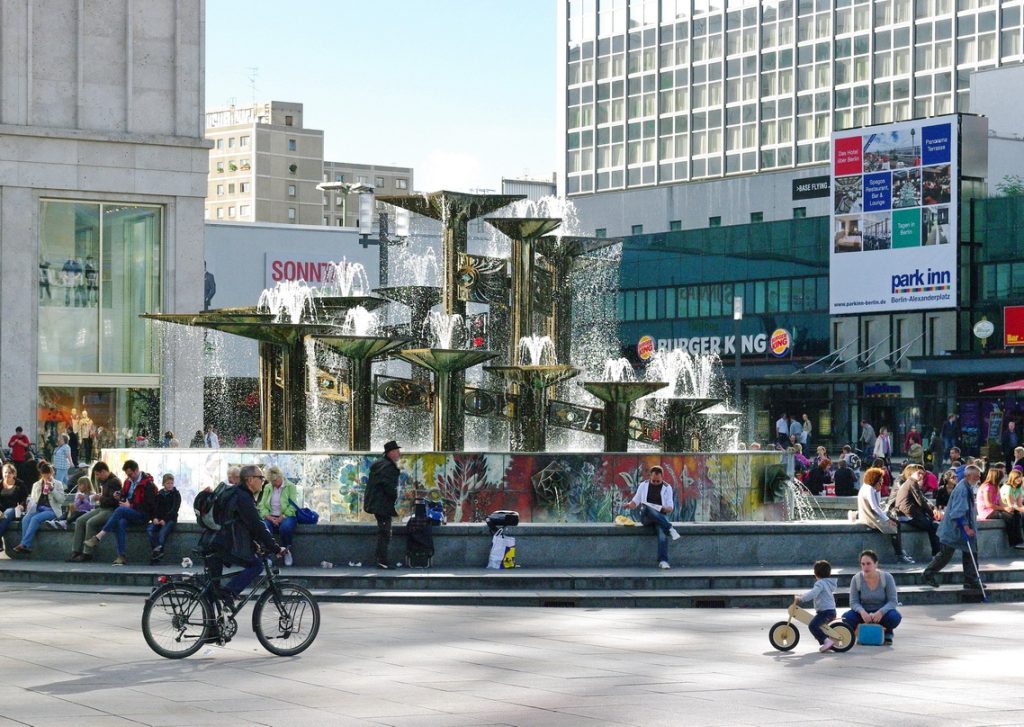
💠 The czar, who has not set foot on the square
Although Alexanderplatz owes its name to Tsar Alexander I, the irony of history is that the monarch most likely... never visited the square itself. His visit to Berlin in 1805 was diplomatic in nature, and the renaming of Ochsenmarkt was a political gesture - more of a symbol than a reminder of a real event.
💠 A world clock that shows 148 times
Erected in 1969, the Weltzeituhr (World Time Clock) has become one of the square's most interesting and photogenic installations. The rotating ring shows the current time in 148 cities around the world - from Tokyo to Caracas. The clock was an expression of the GDR's openness to the world... at least symbolically.
💠 Alexanderplatz as a film set
The square has been used numerous times in films and TV series, both during the GDR era and after reunification. The most famous work remains the film adaptation of the novel "Berlin Alexanderplatz" by Alfred Döblin - a story of decline, loneliness and harsh life in interwar Berlin. The 1980 production, directed by Rainer Werner Fassbinder, is today a cult item.
💠 Site of one of the largest demonstrations in East German history
On November 4, 1989, a gigantic demonstration for freedom of speech and reform took place at Alexanderplatz. It is estimated that more than half a million people gathered there. This event went down in history as one of the key moments that hastened the collapse of the GDR - the square once again witnessed a breakthrough.
💠 The phenomenon of "urban legend" - underground tunnels
There are many urban legends floating around Alexanderplatz - one of them is the tale of alleged underground tunnels from the GDR era, leading to hidden shelters or secret passages between buildings. While some of these stories are exaggerations, the fact is that underneath the square lies an extensive communications and technical infrastructure that has still not been fully explored.
9️⃣ Aleksanderplatz in culture, film and literature
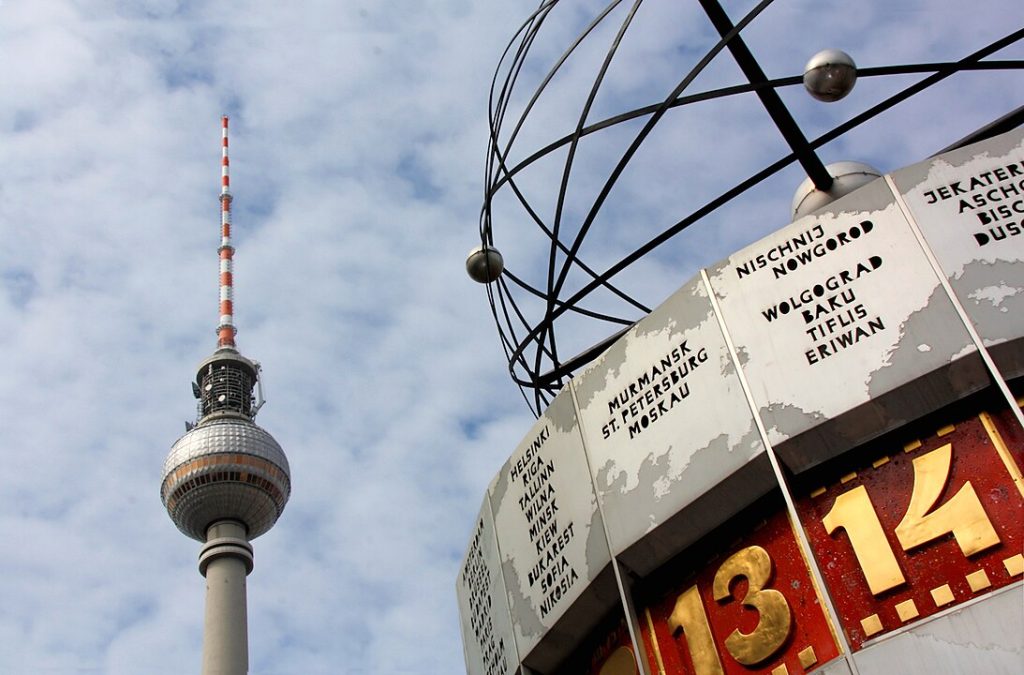
💠 The novel that defined the square
One of the strongest cultural associations with Alexanderplatz is the novel Berlin Alexanderplatz by Alfred Döblin, published in 1929. It is a dark, modernist story about Franz Biberkopf - a former prisoner trying to start a new life in the big city. In it, the square becomes not only the backdrop of events, but also a symbolic space of chaos, violence and moral rifts in the society of interwar Berlin.
💠 Fassbinder and the cult film adaptation
Based on Döblin's novel, a famous miniseries was made in 1980, directed by Rainer Werner Fassbinder. Lasting almost 15 hours, the work is today a classic of German cinema - raw, experimental, full of emotional tension. Alexander Square is shown as a ruthless, dirty, but also fascinating place - an urban jungle in which the protagonist tries to survive.
💠 Square in a supporting role, but unforgettable
Alexanderplatz has also appeared many times in other productions - from documentaries to modern thrillers and dramas. Often not as the main character, but as a recognizable backdrop to the action. His austere, social-modern aesthetic gives the images a unique atmosphere - somewhat cool, dystopian, yet full of urban energy.
💠 Music and street art
The square has also inspired musicians - both German electronic and new wave artists and hip-hop artists. Today Alexanderplatz is a space for street art: graffiti, performances, spontaneous concerts. Its openness and diversity make it like a living stage - unpredictable and constantly changing.
💠 Place present in language and consciousness
In everyday German, Alexanderplatz functions as more than a point on a map - it is a symbol. Regardless of the era, it has always signified the "center of things" - the place where things happen, where the pulse of the city beats. For many Berliners and artists, it is not just a space, but an emotion - sometimes nostalgic, sometimes disturbing, but always present.
🔟 How to get there and what to see in the area?
💠 Heartland traffic junction
Alexanderplatz is one of the best-connected points in Berlin - no matter where you're coming from, you'll get here quickly and seamlessly. Three subway lines (U2, U5, U8), several S-Bahn high-speed rail lines (S3, S5, S7, S9), streetcars and numerous buses run through here. The station on the square is also a train station serving regional trains, making Alexanderplatz a natural transfer point and a great base for exploring the city.
💠 What's worth seeing within walking distance?
The Alexanderplatz neighborhood is full of attractions - just a few minutes' walk away in the heart of historic and cultural Berlin:
- Television Tower (Fernsehturm) - A must-see, with an observation deck at an altitude of 203 meters.
- Rotes Rathaus (Red City Hall) - the seat of Berlin's mayor, with its distinctive red brick and rich history.
- Marienkirche - One of the oldest churches in Berlin, located right next to the tower.
- Nikolaiviertel - A charming neighborhood rebuilt in a historic style, full of cafes and alleys.
- Museum Island (Museumsinsel) - A few minutes' walk separates the square from one of Europe's most important cultural enclaves, a UNESCO-listed site.
💠 Walking through different eras
The uniqueness of this part of Berlin is that you can traverse centuries in one hour. From medieval churches to Prussian elegance to East German brutalism, it's all within easy reach of your feet. Alexanderplatz is the perfect starting point for both first-time visitors and those who want to explore Berlin's less obvious layers.
1️⃣1️⃣ Summary - bridging the past and the present
Alexanderplatz is a place that cannot be clearly pigeonholed. Over the centuries it has changed its face - from a market square, to the modernist center of the GDR, to today's dynamic transportation and commercial hub. Its history is the story of Berlin in a nutshell: full of change, tension and constant redefinition.
For some, it is a cold relic of socialism, for others - a symbolic space of freedom and transformation. For tourists - a must-see spot, for Berliners - an everyday reality. It is this multidimensionality that makes Alexanderplatz unique - a place that has not stopped in time, but is still searching for its meaning.
Walking around the square is not only a journey through space, but also through time - between ideology and consumption, between the past and the future. And perhaps that is why Alexanderplatz never ceases to fascinate. It is a bridge - symbolic and literal - between eras that connects what has been with what is yet to come.

